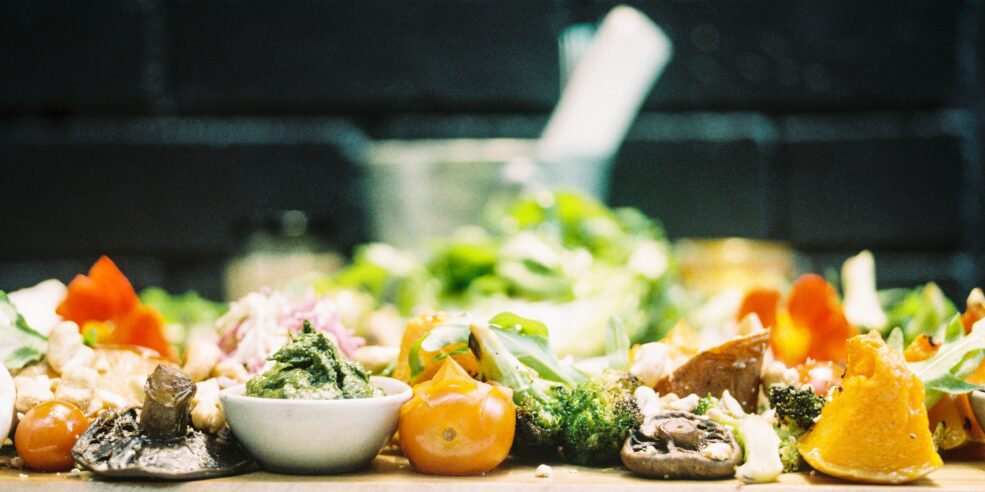Food waste is an enormous problem in the hospitality industry, globally it contributes 530 M tonnes of CO2 emissions and more than $100B in lost revenue. It can be hard for restaurants to see a return on investment from implementing sustainable strategies, but reducing waste brings immediate benefits.
Reducing waste within your restaurant helps to improve company branding, increasing long-term sales by attracting more customers. Also for immediate ROI, it reduces costs by making the most out of the stock you have.
Controlling food costs is extremely important in the restaurant industry. There are a huge amount of fluctuations in prices due to inflation and supply chain issues, but to be profitable food costs should be between 25 – 40% of revenue.
Use tech to analyse how many of each type of dishes sell per hour, per day of week. If dishes need extensive prep, having an idea of how many will sell reduces waste and reduces time spent by chef’s creating dishes that won’t be sold. – Maddie Pellico, Customer Success Team Lead at Tenzo
Tips to help reduce food waste;
Reducing food waste
The UK wastes about 30% of its food.
Reducing food waste isn’t an easy task, but making small steps towards reducing waste within your business and restaurant will help make a difference financially and environmentally.
Effective Inventory Management
Effective inventory management is essential for the quality and safety of the food stored at restaurants. It is crucial in ensuring food lasts as long as possible, controlling costs within your business and boosting profitability.
A popular method is the FIFO (First In First Out) storage system; this simple method for organising stock maximises freshness and quality whilst reducing the likelihood of spoilage, and therefore waste, by ensuring that the oldest stock is used up first.
Ensuring that routine maintenance on fridges and freezers is carried out is imperative in reducing waste from premature stock expiry. Temperature checks should be taken regularly to monitor this, and if it’s noticed that one is not functioning all food should be removed to a chilled storage area that is working.
Zero Waste
Aiming to have a zero-waste kitchen is a great way to alter your restaurant’s outlook on reducing waste. Use entire products where you can and incorporate unused products into daily prep, or add new menu items that use up excess stock – for example, making stock from leftover carcasses or vegetables.
Repurposing food that is below expected quality is also a good way to reduce wastage, e.g. turning stale bread into breadcrumbs is a great way of using slightly spoiled food safely.
Controlling Food costs
Food cost can also vary significantly between weeks if the price of ingredients increases or the yield after prepping decreases, but the price on the menu stays the same. This inevitably results in your food cost increasing.
Calculating your food costs is important, ineffective management could affect the profitability of your business. It also helps you to gain more of an understanding of operations and menu profitability.
Supplier Relationships
The pandemic made it clear how much restaurants and suppliers relied on each other for the success of their businesses, having a mutual understanding of this and maintaining good relationships helps everyone succeed.
Using few suppliers increases this dependence; with either business benefiting from the success of the other. This works as an advantage as you’re likely to get the best deals and produce, saving you money on your inventory costs.
Delivery costs can also add up, so using fewer suppliers means fewer delivery costs; and less requirement to be ordering more to meet the minimum delivery amount.
Seasonal Produce
The use of seasonal produce is another sustainable method to control your food costs; using food where it’s locally available and at the peak time of the year.
In-season produce is not only much better quality and taste compared with out-of-season, but it is also significantly cheaper. This can allow for bigger profit margins, or even encourage ATV by making a cheaper menu.
Global seasonality is different to local seasonality, it involves focusing on where the produce is grown and not about being consumed where it’s harvested; so buying goods from where they are naturally grown and shipping them to your restaurant. Due to the high energy that normally goes into producing out-of-season goods, this is almost as sustainable and cheap as local seasonality.
Monitoring Portion Size
Portion size can be a huge factor in the profitability of menu items, and can also affect customer satisfaction though. Ensuring consistent portion sizes helps with managing budgets and customer expectations.
Keep on top of your portion size. Account for plate waste to see where portion sizes can be reduced, along with costs. Standardise your portion sizes with small wares that make it easy for employees to know how much to give, even when they’re in a rush.
Another way to maximise profits is to have varying portion sizes on the menu, one menu item that has regular and small options. The decrease in portion size is not relative to the decrease in the cost of food, but most customers will choose smaller portions to save money. Customers feel like they’re getting their money’s worth and being cost-effective, but the profit margins are much better.
Importance of Accurate Forecasting
To run your restaurant as efficiently as possible you need to prepare accurately. Using technology and forecasting tools helps to ensure that this is always the case. Improve the accuracy of your forecasting by combining AI with human knowledge; let the technology provide the best number and then the GM edit it based on factors that the AI could never know about.
Forecasting reduces waste by predicting the number of covers you will have in the coming hours, weeks, and days. Never over-ordering or under-ordering is crucial in reducing waste and controlling costs, as is preparing effectively for the coming shifts.
Dynamic PAR (periodic automatic replenishment) ordering is a good system to reduce the likelihood of waste. It involves finding the optimum (and minimum) level of stock for any given inventory, so you never run out or have excess. Being dynamic, it changes relative to forecasted events, further increasing the accuracy of ordering as optimum levels change in line with demand.
Conclusion
Food waste in restaurants is not only a challenge that affects business performance, but it also affects society and the environment. It’s within global and business interest to work towards reducing waste from your restaurant.
There are many challenges involved with reducing food waste, but following our tips can help to minimise it and in turn; save your business money and boost performance.




